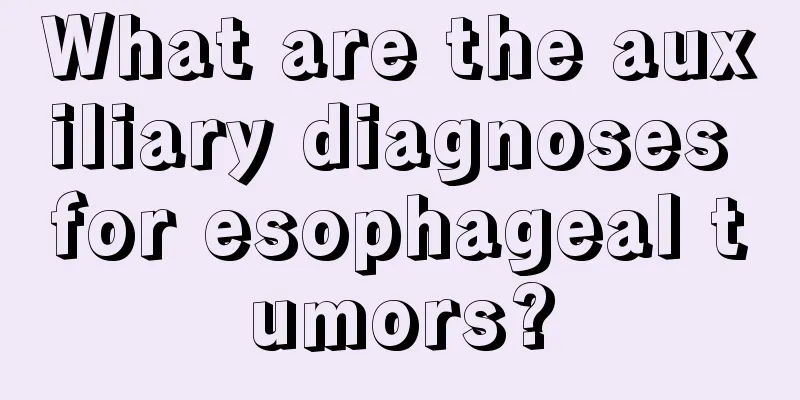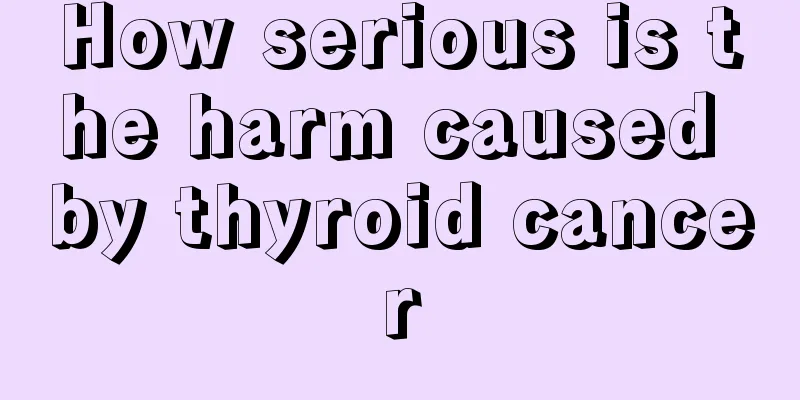What are the auxiliary diagnoses for esophageal tumors?

|
After you detect the signs of esophageal tumor, you should take the initiative to seek medical treatment and get a diagnosis. The doctor will diagnose whether you have esophageal tumor. In addition to the three ideal diagnoses, there are some auxiliary diagnoses. Hospitals generally have three ideal diagnoses: one is X-ray barium meal examination; the second is "esophageal drag net" exfoliated cell examination; the third is esophagoscopy or fiber esophagoscopy. If one of these is positive, the diagnosis can be confirmed. The diagnostic compliance rate of barium swallow X-ray contrast is over 80%, and the patient is painless and easy to accept. "Esophageal drag net" exfoliated cell examination is the best method for diagnosing esophageal tumors. The diagnosis rate of fiber esophagoscopy is almost 100%. Auxiliary diagnosis of esophageal tumors: (I) X-ray barium meal examination X-ray barium meal examination of the esophagus can show that the barium is stagnant at the cancer site, and the barium flow in the lesion segment is thin and narrow; the esophageal wall is stiff, the peristalsis is weakened, the mucosal texture becomes coarse and disordered, and the edges are rough; the esophageal cavity is narrow and irregular, the upper segment of the obstruction is slightly dilated, and there may be changes such as ulcer niches and abandoned defects. Conventional X-ray barium meal examinations often fail to detect superficial and small cancers. The use of sodium methylcellulose and barium for double contrast imaging can more clearly display the esophageal mucosa and increase the detection rate of esophageal tumors. (ii) Fiberoptic esophagogastroscopy can directly observe the morphology of the tumor and perform biopsy pathology under direct vision to confirm the diagnosis. (III) Cytological examination of esophageal mucosa: A double-lumen tube cell collector with a wire mesh and balloon is swallowed into the esophagus, and the balloon is inflated after passing through the lesion, and then the balloon is slowly pulled out. The net is taken to smear for cytological examination, with a positive rate of more than 90%. It is often used to discover some early cases and is an important method for large-scale screening of esophageal tumors. (IV) Esophageal CT scan CT scan can clearly show the relationship between the esophagus and the adjacent mediastinal organs. Normally, the esophagus is clearly demarcated from the adjacent organs, and the thickness of the esophageal wall does not exceed 5 mm. If the thickness of the esophageal wall increases and the boundary with the surrounding organs is blurred, it indicates the presence of esophageal lesions. (V) Other examination methods: Toluidine blue or iodine in vivo staining endoscopic examination has certain value in the early diagnosis of esophageal tumors. This method has the advantages of being simple and easy to perform, and accurately locating and determining the scope of the tumor. Esophageal tumor: http://www..com.cn/zhongliu/sda/sdzl.html |
<<: Methods for early diagnosis of esophageal tumors
>>: What are the symptoms of gallbladder tumor?
Recommend
How to prevent pancreatic cancer through diet
Pancreatic cancer is one of the common malignant ...
Should Yanhuning be used with salt water or sugar water?
Inotropin is a Chinese patent medicine. It is an ...
What are the benefits of drinking water in the morning
Maybe many of us love to drink water. Drinking wa...
How can smokers prevent lung cancer
Lung cancer has become the leading cancer in my c...
What causes blisters in the nose?
The health of the nose is extremely important to ...
What are the early symptoms of lung cancer? There are 3 symptoms of early lung cancer
When treating lung cancer, the sooner you start, ...
What are the effects of the diamond vine bracelet
Goldenrod is a plant that likes to grow in a rela...
How to take a nap to maintain your health
As the saying goes, "Spring makes you sleepy...
What are not the main causes of primary liver cancer
The main causes of primary liver cancer are hepat...
Symptoms and treatment of gout in the feet
Everyone should be familiar with gout. There are ...
The role of coarse salt
The so-called coarse salt actually refers to the ...
Is it okay to wash your face without facial cleanser?
In daily life, many people do not use facial clea...
What are the common factors that cause tongue cancer?
In recent years, many people have fallen in love ...
What are the solutions to anal pain during bowel movements
Many people experience anal pain when defecating ...
What should you pay attention to when you have a dizziness and headache during self-massage
With the rapid development of society, many peopl...









